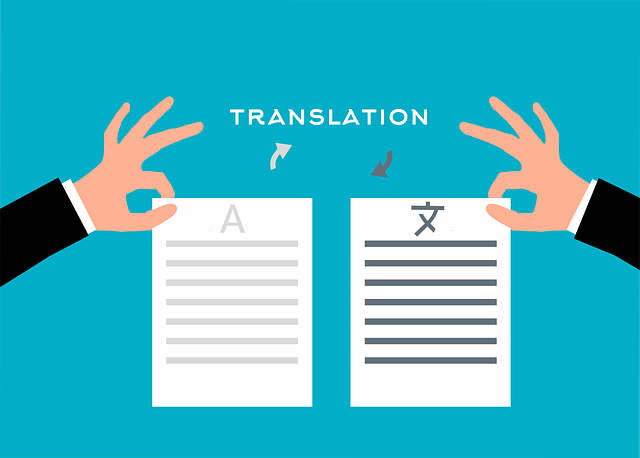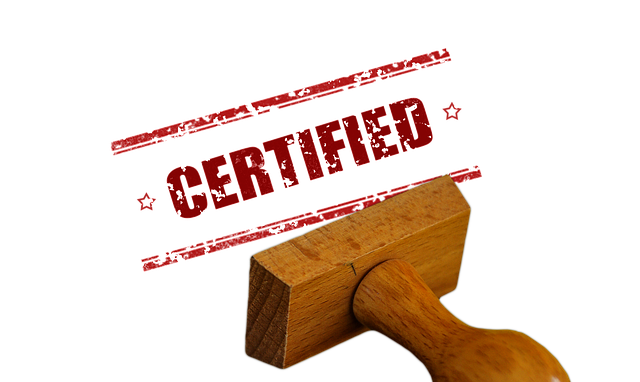Rapid Translate Team
Professional translations are often necessary for legal documents meant for official purposes. Since translations are mostly useful for business, immigration, or educational documents, we don’t recommend using machine translation. Likewise, authorities frown on having family or friends translate your papers. Thus, it’s necessary to get a certified translator.
Verified translators have official recognition from federal governments or organizations, acknowledging their skills and qualifications. This recognition proves their credibility and provides conviction of the accuracy of their language translation services.
If you’d like to become a verified translator, we’ll teach you the steps to do so.

Table of Contents
Understanding the Importance of Verified Translators
Certified or verified translators are indispensable because of the quality of their interpretations. You may think all translators have certifications, but that’s not always the case.
Some translators have no certification and don’t belong to any professional association. Therefore, they have nothing to vouch for their skills and can’t take on certain tasks.
The work of verified translators receives higher ratings because of their official pedigree. Thus, they qualify for all translation jobs. Examples of translation gigs solely for certified translators include visa and passport translation.
Most documents for foreign governmental entities undergo certified translation.
Professional translators with certification also deal with legal documents like marriage or birth certificates. Additionally, academic records and documents for institutional applications require verified translators.
If you hire a non-verified translator, there should be an accompanying certification statement.
So, you can’t escape the need for certification when translating governmental, legal, or educational documents.
You should hire a certified professional translator rather than pay for an evaluation and certification statement. Approved official translators will do a remarkable job, heightening your chances of success.
Approved translators are mostly national and vary by country. However, some translation authorities have global prestige, leading to a higher demand for translators with their certification. So verified translators stand out in their field; therefore, those who hire them enjoy certain privileges.

How To Become a Certified Translator
Some governments and institutions reject translations that do not meet their requirements. Furthermore, one major requirement is using a verified translator or submitting a certification of accuracy.
So, to gain authentication, a salary raise, or access opportunities, a translator may wonder how to become a certified translator.
The process for becoming a certified language translator may differ depending on your location. That’s because there are different licensing authorities responsible for accrediting translators. However, there are various certification bodies in the USA, and each translation niche has its requirements and qualifications.
But there are some general necessities. An approved translator must have at least one language degree from a recognized institution. They must have also sat for professional translation examinations and passed.
Additionally, your translation niche determines the licensing body you’ll use for your certification.
For example, your educational qualifications must tally to become a certified medical translator. You must also pass various modalities before attaining the certification status. After this, you can now handle legal translations for courts, businesses, hospitals, and institutions.
Understanding ATA Certification
The American Translators Association (ATA) started a professional program in 1973 to aid the recognition of professional translations. ATA certification is widely recognized in the United States as it attests to a translator’s pedigree and signals competence.
This credential verifies translators’ knowledge and skills. Therefore, the ATA seal is like a badge of trust. Ownership of this certification grants you a spot in the ATA’s directory as a language professional, elevating your ranks.
Becoming an ATA-certified translator requires training, experience, and passing tests. Even after gaining an ATA certification, its maintenance requires continual learning to meet educational requirements.
The ATA certification has language pairs. Therefore, their professional translators can translate from English to a foreign language and vice versa.
ATA, as an organization, consists of freelance translators and professional companies. Companies and individuals can enroll for certification, and clients can hire whichever they desire.

5 Steps You’ll Take When Becoming an ATA Certified Translator
Each country has a translator certification or licensing body. The USA has the American Translators Association, which holds global prestige.
What do you need to do to become an ATA-certified translator? Read our steps below to learn everything you need to know.
1. Check if ATA Supports Your Language Pair
ATA supports some foreign languages but not all. So, the first step to becoming a member is confirming that this association supports your language combination. Below is a list of 15 language translations from and into English that ATA offers:
- Arabic
- Ukrainian
- Chinese
- Croatian
- Dutch
- French
- German
- Korean
- Italian
- Japanese
- Polish
- Portuguese
- Russian
- Spanish
- Swedish
ATA also supports translations from English to Finnish, Hungarian, Romanian, and Danish to English.
2. Join the American Translators’ Association
Only members of the American Translators Association can take the exam. So you must become a member at least four weeks in advance.
Anyone with a professional or scholarly interest in translation can become an associate. You’ll submit a membership application through their website and then wait for your acceptance.
3. Meet the Qualifications
You must meet some criteria to qualify for the exam. Here is a list of the appropriate qualifications you’ll need.
- A graduate degree and proof of translation work practice for two years.
- A bachelor’s qualification from any translation institute on the ATA Education and Pedagogy Committee’s list.
- Proof of five years of translation work experience.
4. Make Payment
As a member, you can now pay for the translator certification exam. The examination registration fee, which covers grading and administrative dues, costs $525. They have a maximum sitting capacity that can sell out, so register quickly.
Before the exam, you can take preparatory practice tests. The test costs $80 and $120 for members and non-members.
5. Write and Pass the Certification Exam
The certification exam is tough and requires knowledge and skill. That’s why out of 10,000 ATA members, less than 2,000 have the certification. The three-hour exam tests your understanding of the source and target languages alongside translation techniques.
The proctored exam has three passages, each numbering 222 to 275 words, which you must translate. Additionally, there are many examination software and hardware requirements alongside permitted online resources. You’ll be an ATA-certified language translator if you pass the exam.
How To Find a Certified Translator Near Me
If you need a verified translator, using one close to you would be convenient. There are numerous certification companies available. Visit Google or any search engine and type “Certified translator near me” for several options. But check their services to ensure they offer the language translation you require.
You should read reviews on and off the company’s page. But remember that translation companies are more expensive, so consider using a freelance translator. The rates of some individual translators are slightly negotiable, allowing you to secure cheaper deals.
If you choose this option, ask for proof of their certification as confirmation. We advise you to research their licensing organization to confirm their credibility. Alternatively, you can find an ATA translator via their language service directory.
But if you can’t find a physical translation office nearby, there’s a safe alternative. The world is gradually becoming a global village through technological digitization. This advancement enables companies to render their services online.
You can find an online certified translator or translation service, but you must confirm their certification and reliability. If you need the help of a certified online translation service, contact RapidTranslate. The service elevates global communication and eliminates language barriers through the power of rapid translation.
With verified translators for over 60 languages, Rapid Translate delivers certified translations of all kinds of documents. So, order now and bask in the euphoria of seamless communication!





